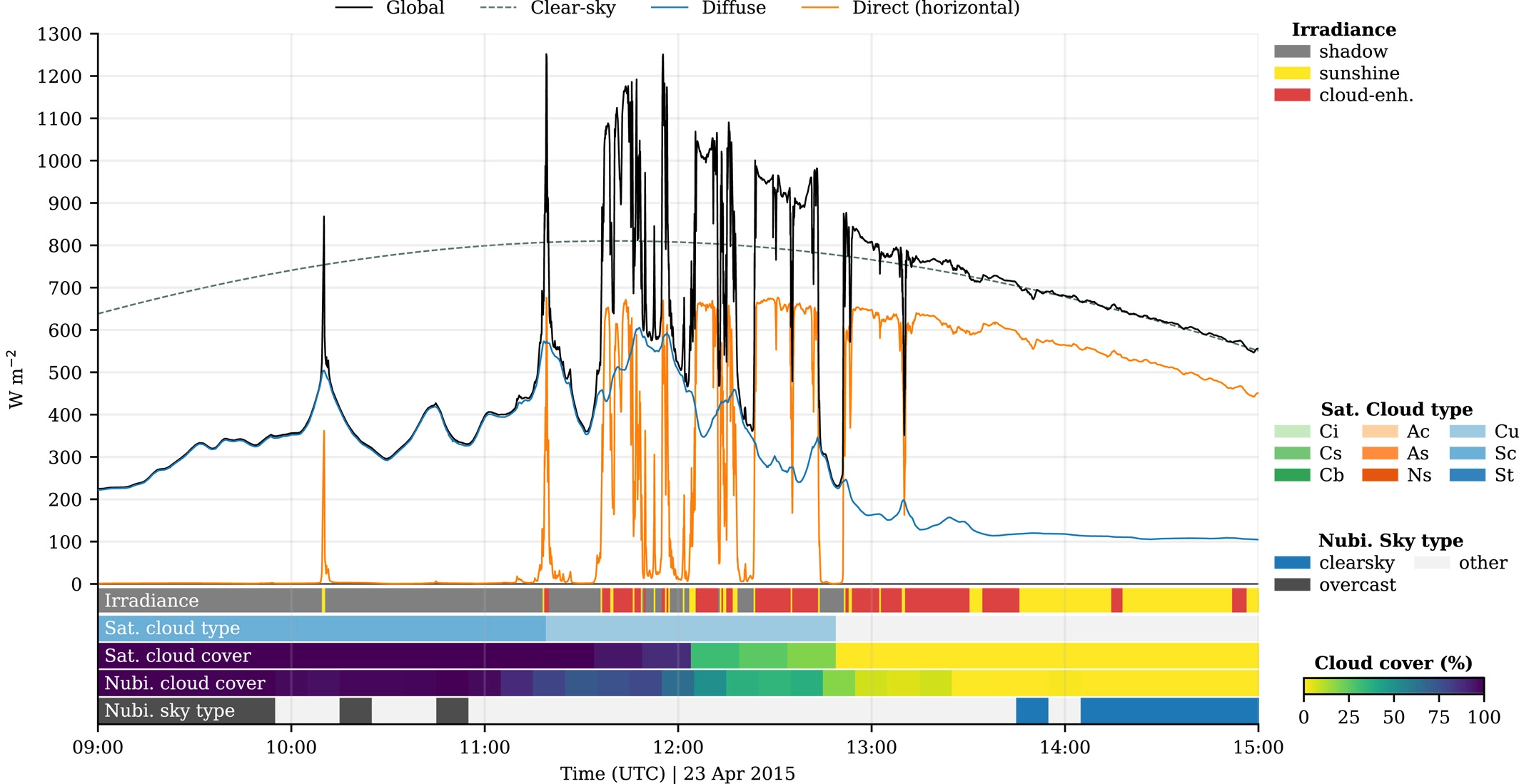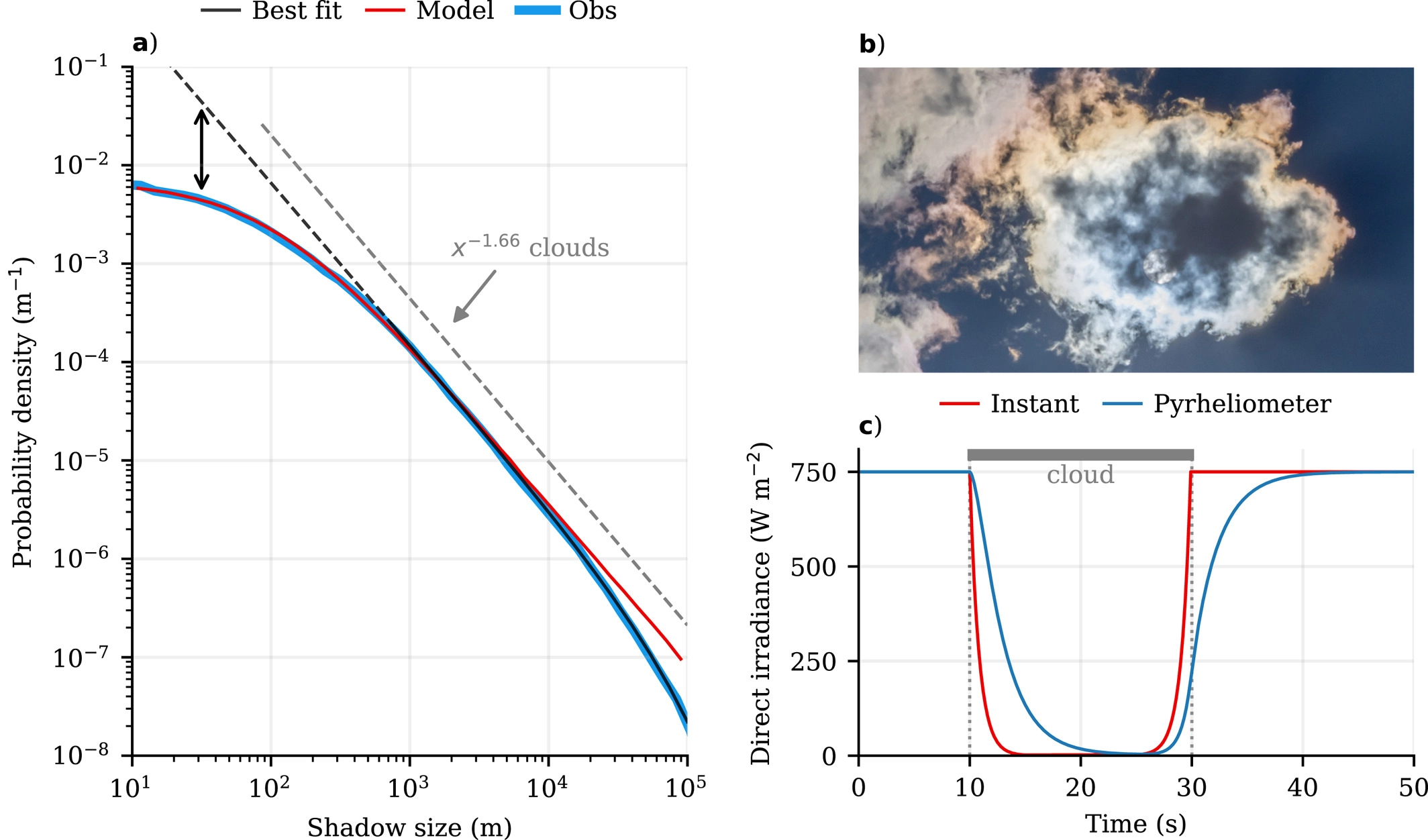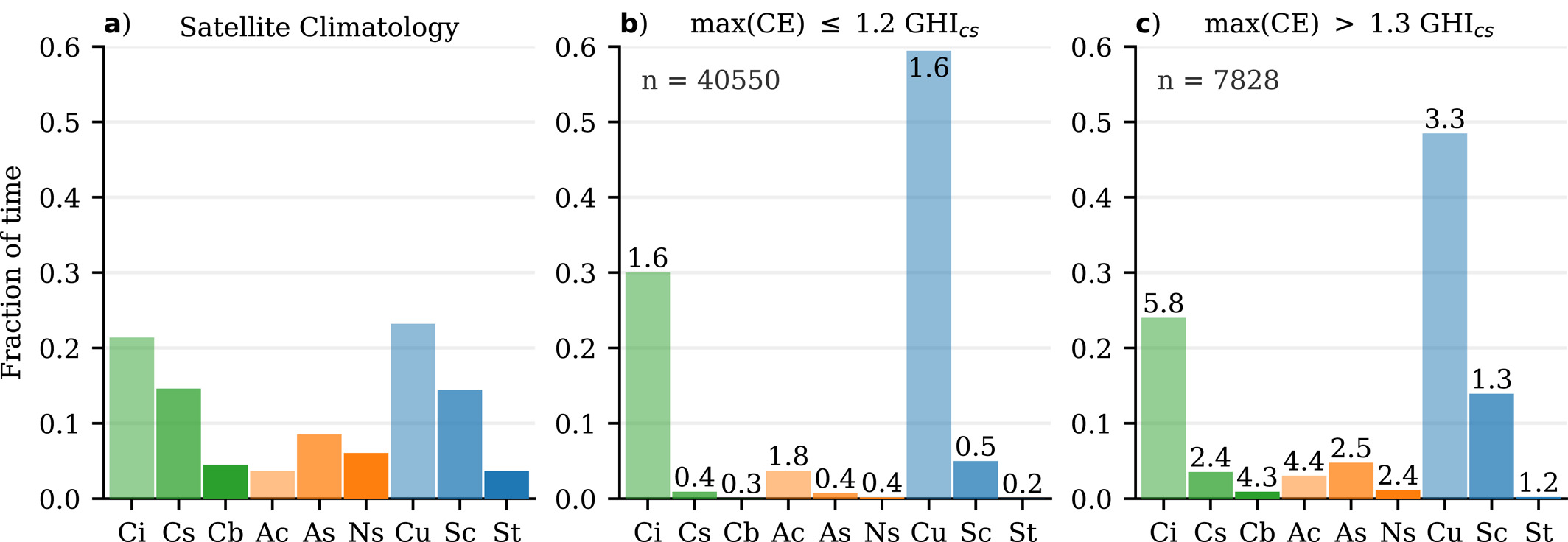The Power Law of Solar Irradiance Variability
Tags: Solar Irradiance
Posted on Thursday 2 Mar 2023, 09:47 (last modified: 2 Mar 2023, 15:03)

This blog highlights the main findings of my newly published paper in JGRA.
How large is a typical cloud shadow?
Surface solar irradiance, or just 'sunlight', is highly variable, largely thanks to clouds. These clouds create shadows, or scatter and redistribute sunlight to create areas of enhanced irradiance. One of the open questions was something as simple as, how large are cloud shadows? And what is the typical size and strength of an area of enhanced irradiance?
As part of the Shedding Light on Cloud Shadows project, I answer this question using a high resolution, 10-year dataset of observations of surface solar irradiance.
The Cabauw Solar Irradiance Dataset

The 'BSRN' station at the Ruisdael Observatory at Cabauw has been observing surface irradiance in detail since 2005. One of the important aspects here is the measurement of direct and and diffuse irrradiance (scattered and unscattered sunlight), and the 1-second time resolution. Combined with some extra cloud observations, we can create figures like the one above, which shows the highly variable irradiance due to a transition from overcast to clear-sky conditions.
All measurements of this dataset are categorized, so that we can automatically detect cloud shadows and enhanced irradiance. From these 'event' detections, we calculate all kinds of statistics. Over those 10 years, we detected more than 180,000 clouds shadows, and, surprisingly, just as many cloud enhancements.
You can find the full dataset and its description over at ESSD.
Power Law and Cloud Types
It turns out there is not a single time or length scale of cloud shadows or enhancement, but a wide range. In fact, we find that cloud shadow sizes are nearly identical to that of cloud sizes, despite many complicating factor such as the Sun's position or clouds being 3D. Much of the complexity can be described by a simple 'power law' function, which is linear on a log-log plot, as shown below. The cloud size distribution is described by such a power law, with exponent -1.66, and so are cloud shadows (-1.64). This value means that all scales are important, or put technically, they all contribute significantly to the total variance.
The deviations are caused by cloud edges being transparent, and thus cloud shadows being slightly smaller than the 2D shadows a 3D cloud casts. The length scale of this transparency is about 25 meters per cloud edge, which combined with a sensor response time, allows you to translate from cloud size distributions to cloud shadows.

And what cloud type is the most important for this distribution of cloud sizes? Mostly broken or scattered boundary layer clouds. Below is a figure for the cloud type associated with cloud enhancement, which looks very similar to that of cloud shadows. Relative to climatology (a), cumulus clouds are most dominant.

Implications
It's very challenging to accurately model solar irradiance variability due to it's many relevant spatial and temporal scales, and high computational demand. Yet, variability is an important aspect to resolve for any domain in which solar radiation plays a role, most notably solar energy production, land-atmosphere interaction though photosynthesis and heat fluxes, and it even feeds back to the generation of clouds themselves.
We hope that our findings contribute to the development and validation of models that are attempting to resolve variability more accurately - ultimately benefiting many domains in the atmospheric sciences.
For more details, references, and our in-depth analysis including model validation, please refer to the paper in JGR Atmospheres.
Cheers,
Wouter